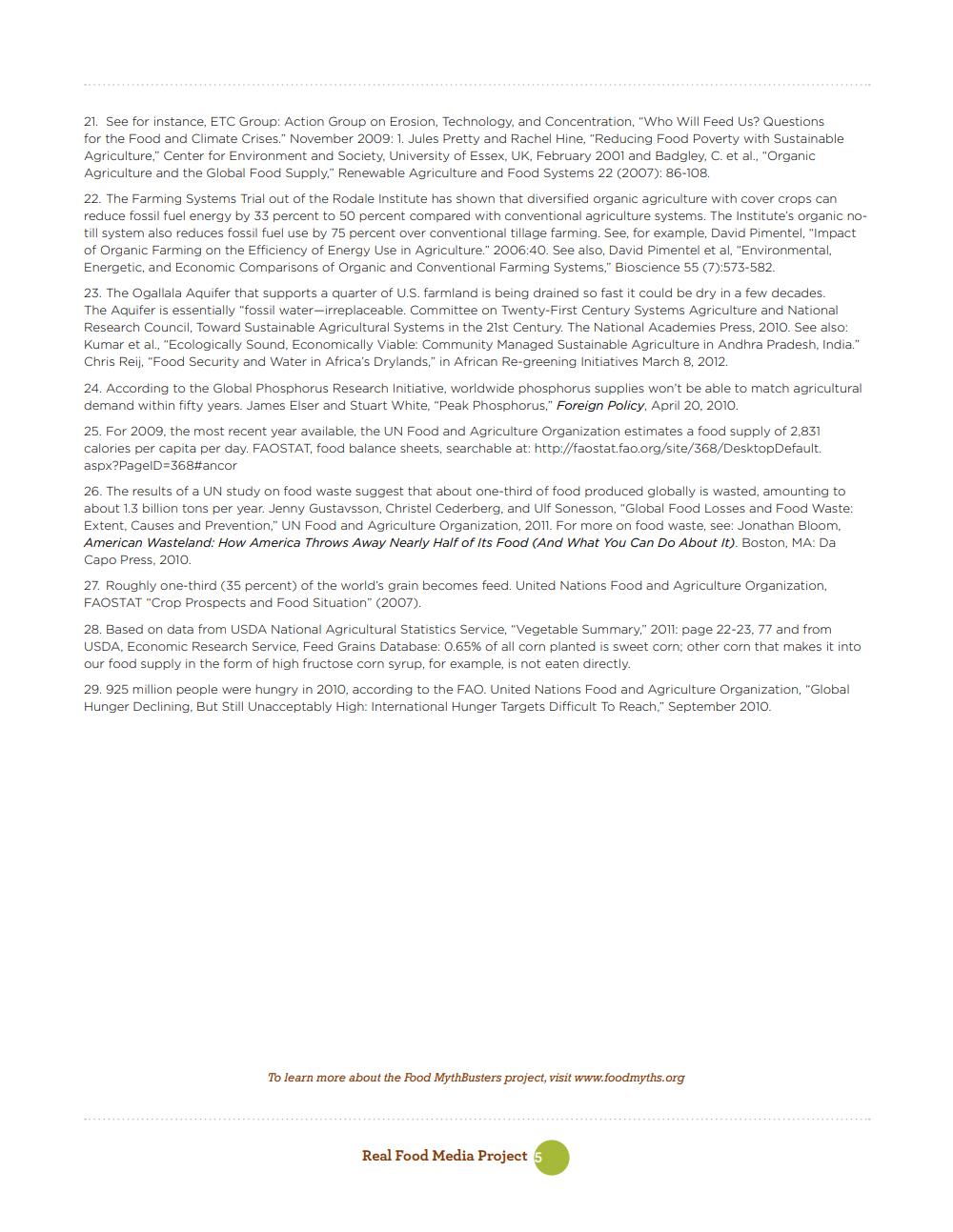Book Title: Food Myth Busters Author(s): Publisher: ZZZ Unknown View full book textPage 5
________________ 21. See for instance, ETC Group: Action Group on Erosion, Technology, and Concentration, "Who Will Feed Us? Questions er 2009: 1. Jules Pretty and Rachel Hine, "Reducing Food Poverty with Sustainable Agriculture," Center for Environment and Society, University of Essex, UK, February 2001 and Badgley, C. et al., "Organic Agriculture and the Global Food Supply," Renewable Agriculture and Food Systems 22 (2007): 86-108. 22. The Farming Systems Trial out of the Rodale Institute has shown that diversified organic agriculture with cover crops can reduce fossil fuel energy by 33 percent to 50 percent compared with conventional agriculture systems. The Institute's organic notill system also reduces fossil fuel use by 75 percent over conventional tillage farming. See, for example, David Pimentel, "Impact of Organic Farming on the Efficiency of Energy Use in Agriculture." 2006:40. See also, David Pimentel et al, "Environmental, Energetic, and Economic Comparisons of Organic and Conventional Farming Systems," Bioscience 55 (7):573-582. 23. The Ogallala Aquifer that supports a quarter of U.S. farmland is being drained so fast it could be dry in a few decades. The Aquifer is essentially "fossil water-irreplaceable. Committee on Twenty-First Century Systems Agriculture and National | Systems in the 21st Century. The National Academies Press, 2010. See also: Kumar et al., "Ecologically Sound, Economically viable: Community Managed Sustainable Agriculture in Andhra Pradesh, India." Chris Reij, "Food Security and Water in Africa's Drylands," in African Re-greening Initiatives March 8, 2012 24. According to the Global Phosphorus Research Initiative, worldwide phosphorus supplies won't be able to match agricultural demand within fifty years. James Elser and Stuart White, "Peak Phosphorus," Foreign Policy, April 20, 2010. 25. For 2009, the most recent year available, the UN Food and Agriculture Organization estimates a food supply of 2,831 calories per capita per day. FAOSTAT, food balance sheets, searchable at: http://faostat.fao.org/site/368/Desktop Default. aspx?PageID=368#ancor 26. The results of a UN study on food waste suggest that about one-third of food produced globally is wasted, amounting to about 1.3 billion tons per year. Jenny Gustavsson, Christel Cederberg, and Ulf Sonesson, "Global Food Losses and Food Waste Extent, Causes and Prevention," UN Food and Agriculture Organization, 2011. For more on food waste, see: Jonathan Bloom, American Wasteland: How America Throws Away Nearly Half of Its Food (And What You Can Do About It). Boston, MA: Da Capo Press, 2010. 27. Roughly one-third (35 percent) of the world's grain becomes feed. United Nations Food and Agriculture Organization, FAOSTAT "Crop Prospects and Food Situation" (2007). 28. Based on data from USDA National Agricultural Statistics Service, "Vegetable Summary," 2011: page 22-23, 77 and from USDA, Economic Research Service, Feed Grains Database: 0.65% of all corn planted is sweet corn; other corn that makes it into our food supply in the form of high fructose corn syrup, for example, is not eaten directly. 29. 925 million people were hungry in 2010, according to the FAO. United Nations Food and Agriculture Organization, "Global Hunger Declining, But Still Unacceptably High: International Hunger Targets Difficult To Reach," September 2010. To learn more about the Food MythBusters project, visit www.foodmyths.org Real Food Media ProjectPage Navigation
1 ... 3 4 5
